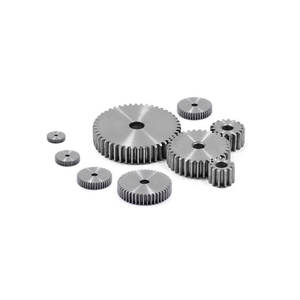Bleeding the hydraulic system of a Turf Torq gearbox is a critical maintenance procedure necessary to remove trapped air after servicing, fluid replacement, or if symptoms like sluggish operation, unusual noise, or loss of power occur. Air within the hydraulic circuit compromises lubrication, reduces efficiency, and can cause premature component failure. This article outlines the professional method for bleeding a Turf Torq gearbox, emphasizing safety and precision. Always consult the specific equipment service manual for model-specific variations before proceeding.
(how to blead turf torq gearbox)
Safety Precautions:
Prioritize safety. Ensure the engine is off and completely cool. Engage the parking brake and block the wheels securely. Work on a level surface to maintain accurate fluid level readings. Wear safety glasses and gloves to protect against hydraulic fluid contact. Have absorbent materials and a spill kit readily available. Never bleed a hot system due to burn risks and fluid expansion inaccuracies.
Required Tools and Materials:
Manufacturer-recommended hydraulic fluid (verify grade per manual, typically ISO 46 or equivalent).
Clean lint-free rags.
Appropriate wrenches or sockets for the bleed screws and reservoir cap.
A clean container for fluid collection.
Funnel with fine mesh screen.
Fluid pump or syringe for precise filling.
Bleeding Procedure:
1. Locate Components: Identify the hydraulic reservoir (often integrated or separate depending on the machine) and the gearbox bleed screws. Turf Torq gearboxes typically feature one or two bleed screws positioned on the top housing, often marked or identified in the manual. The reservoir fill cap usually incorporates a dipstick. Clean the area around the reservoir cap and bleed screws meticulously to prevent contamination.
2. Initial Fluid Level Check: Remove the reservoir fill cap/dipstick. Wipe the dipstick clean, reinsert fully, remove again, and check the fluid level. Top up with the specified fluid if below the “COLD” mark, using a funnel to avoid spills. Do not overfill. Replace the cap loosely to allow air escape but prevent major spills.
3. Prepare for Bleeding: Place the collection container under the gearbox bleed screw(s). Loosen the bleed screw(s) approximately one full turn using the correct size wrench. Do not remove them completely.
4. Bleed the System:
Start the engine and let it idle at the lowest possible RPM.
Observe fluid escaping from the bleed screw(s). Initially, it will appear aerated (foamy or bubbly). This is air being expelled.
Allow fluid to flow until it runs clear and bubble-free. This may take 30 seconds to several minutes per screw. If equipped with two screws, bleed them sequentially.
Crucially, do not rev the engine during bleeding. High RPMs can draw more air into the system. Maintain low idle only.
5. Secure Bleed Screws: Once bubble-free fluid flows steadily, tighten the bleed screw(s) securely while the engine is still idling. Wipe away any spilled fluid immediately.
6. Recheck and Top Up Fluid: Stop the engine. Clean the reservoir area again. Check the fluid level using the dipstick. The level will likely have dropped due to fluid filling the purged circuit. Top up slowly to the “COLD” mark. Ensure no overfilling occurs, as this can cause overheating and seal damage. Securely tighten the reservoir cap.
Post-Bleeding Verification:
Restart the engine and allow it to idle for 1-2 minutes. Listen for unusual whining or cavitation noises indicating residual air.
Operate the machine slowly in forward and reverse directions. Observe gearbox response; it should engage smoothly without hesitation or jerking.
Recheck the fluid level with the engine off after a few minutes of operation and top up to the “COLD” mark if necessary.
Inspect the bleed screw(s) and reservoir cap for leaks. Tighten slightly if seepage is observed.
Perform a final visual inspection for any leaks around the gearbox housing and hydraulic lines.
Conclusion:
(how to blead turf torq gearbox)
Proper bleeding of the Turf Torq gearbox hydraulic system is essential for maintaining optimal performance, efficiency, and longevity. Air pockets cause inefficiencies and potential damage through inadequate lubrication and cavitation. Strict adherence to safety protocols, using the correct fluid, employing a methodical low-idle bleeding process, and thorough post-procedure checks ensure the system operates as designed. Neglecting proper bleeding procedures or using incorrect fluids voids warranties and leads to costly repairs. Incorporate bleeding into routine maintenance schedules following fluid changes or any work involving the hydraulic circuit. Always defer to the official Turf Torq service manual for the specific model’s requirements and torque specifications.


